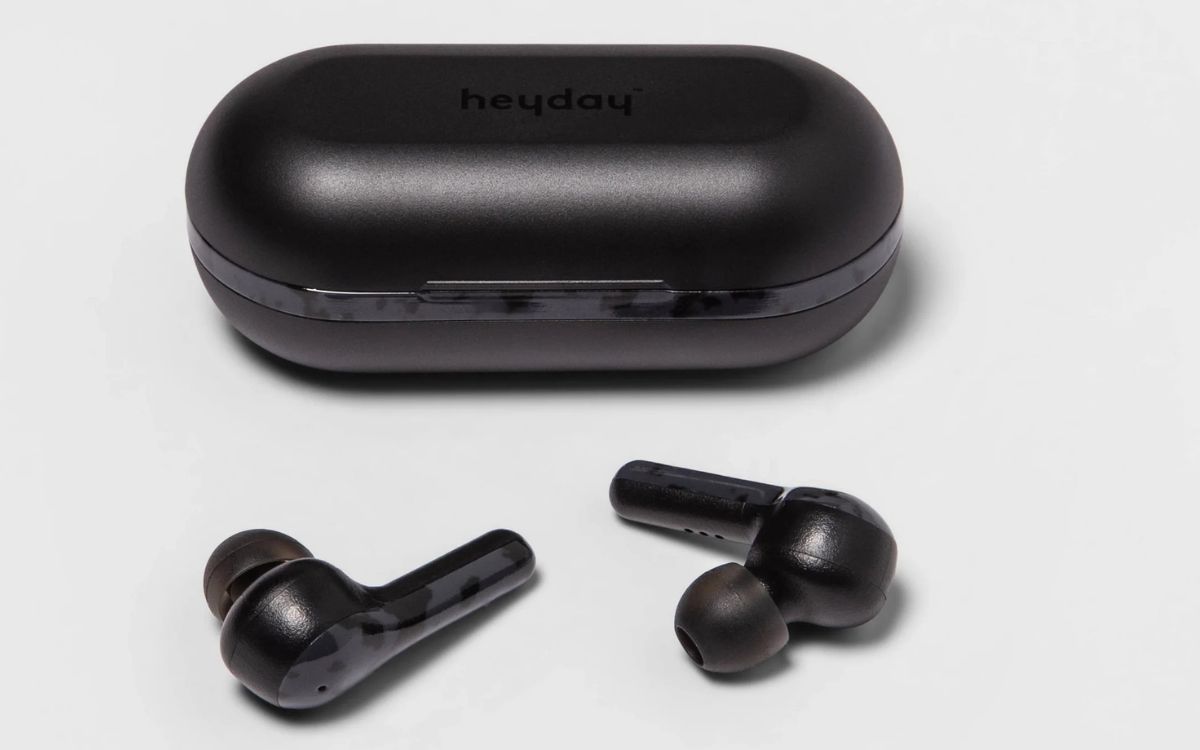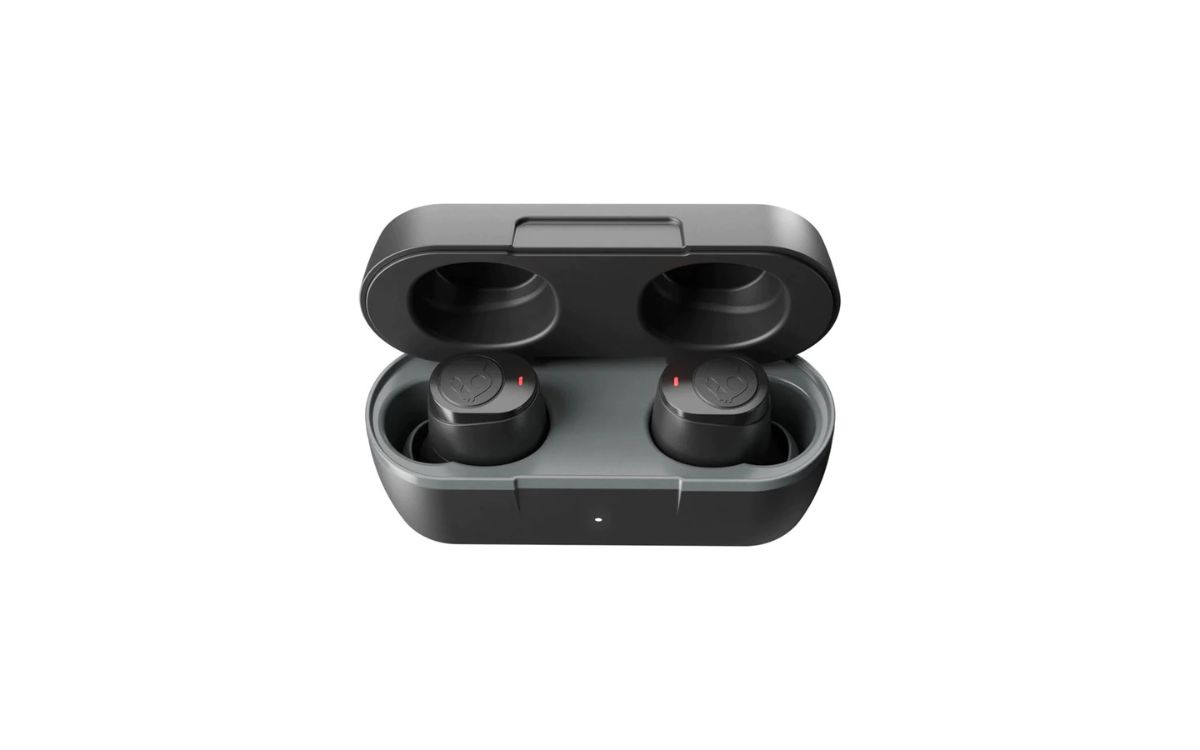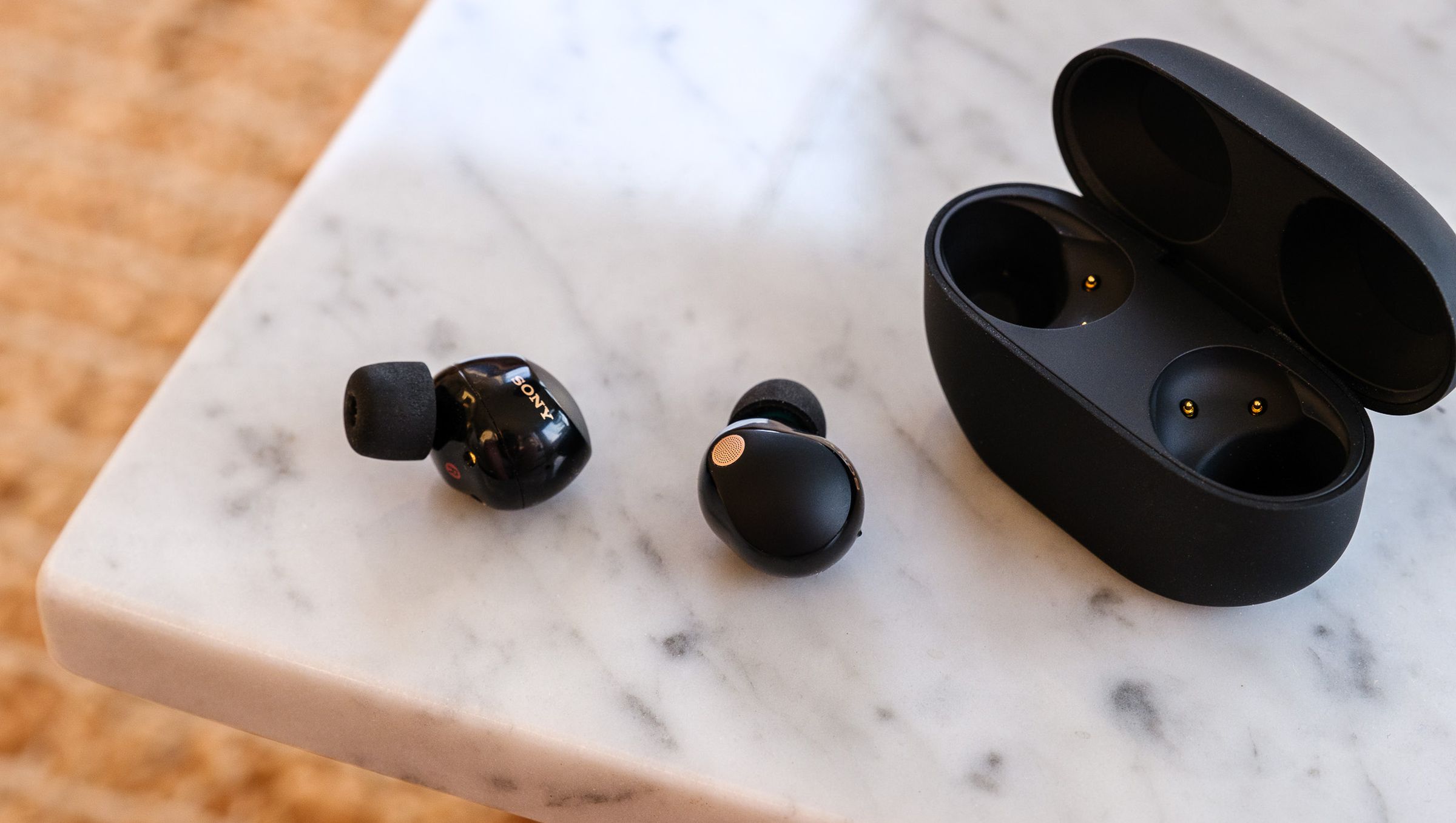Home>Devices & Equipment>Earbuds>When Were The First Wireless Earbuds Made


Earbuds
When Were The First Wireless Earbuds Made
Modified: January 22, 2024
Discover the origins of earbuds in our comprehensive guide. Learn when the first wireless earbuds were made and how they revolutionized audio technology.
(Many of the links in this article redirect to a specific reviewed product. Your purchase of these products through affiliate links helps to generate commission for AudioLover.com, at no extra cost. Learn more)
Table of Contents
Introduction
Wireless earbuds have revolutionized the way we listen to music, make phone calls, and enjoy audio content on the go. These compact and cord-free devices have become increasingly popular, providing freedom of movement and convenience. But have you ever wondered when the first wireless earbuds were made?
The concept of wireless earbuds traces back to the early developments in wireless technology. However, it took several decades for them to become the sleek and sophisticated devices we know today.
In this article, we will explore the history and evolution of wireless earbuds, from their humble beginnings to the cutting-edge technology behind them. We’ll take a closer look at the key milestones and innovations that have shaped the wireless earbud industry, as well as discuss popular models and brands that have left a lasting impact on the market. Additionally, we’ll gaze into the future and see what lies ahead for these game-changing audio devices.
Whether you’re a tech enthusiast or simply curious about the origins of wireless earbuds, this article will provide you with a comprehensive and engaging overview of their fascinating journey. So, let’s dive in and discover the intriguing story behind the creation of wireless earbuds!
Early Developments in Wireless Technology
The roots of wireless technology can be traced back to the late 19th century when inventors like Guglielmo Marconi and Nikola Tesla made groundbreaking discoveries in the field of wireless communication. These pioneers laid the foundation for the development of wireless technologies that would eventually lead to the creation of wireless earbuds.
One significant milestone in the early development of wireless technology was the invention of radio waves. In 1887, Heinrich Hertz successfully demonstrated the existence of electromagnetic waves, commonly known as radio waves. This breakthrough paved the way for wireless communication, allowing information to be transmitted without the need for physical wires.
Fast forward to the early 20th century, and we witnessed the first practical implementation of wireless communication. In 1901, Guglielmo Marconi sent the first transatlantic wireless message, proving that wireless communication was not only possible but also had the potential to revolutionize long-distance communication.
The advancements in wireless technology continued throughout the 20th century, with significant developments such as the invention of the transistor in 1947, which laid the foundation for modern electronics. The transistor made it possible to amplify and transmit audio signals wirelessly, opening up new possibilities for wireless audio devices.
By the 1990s, Bluetooth technology emerged as a major player in the wireless communication industry. Developed by Ericsson in 1994, Bluetooth allowed for short-range wireless communication between devices, enabling the transfer of data and audio signals. This development paved the way for the creation of wireless earbuds as the technology to transmit audio wirelessly became more accessible.
During this time, other wireless technology, such as infrared and radio frequency, were also used for audio transmission. However, they had limitations in terms of range, connectivity, and ease of use. Bluetooth technology proved to be more reliable and versatile, leading to its widespread adoption in various audio devices, including earbuds.
With these early developments in wireless technology, the stage was set for the creation of wireless earbuds. The advancements in wireless communication, combined with the miniaturization of electronic components, set the foundation for a new era of portable and wire-free audio devices.
Evolution of Earphones and Headphones
The evolution of earphones and headphones played a crucial role in the development of wireless earbuds. These audio devices have a rich history, beginning with the invention of the telephone and continuing through various technological advancements.
In the late 19th century, the telephone was invented, and early versions of headphones were used by telephone operators to listen and communicate with callers. These early headphones were large and bulky, consisting of electrodynamic drivers and a headband to hold them in place.
Over the years, headphones went through several iterations, with improvements in sound quality, comfort, and portability. In the 1950s, the first stereo headphones were introduced, providing users with a more immersive and realistic listening experience.
Earphones, on the other hand, have a slightly different history. Early versions of earphones, also known as earpieces, were used primarily for military and communication purposes. These earpieces were small and designed to fit inside the ear, allowing users to listen to audio discreetly.
As technology advanced, traditional wired earphones and headphones became more popular among music enthusiasts and professionals. They were widely used with personal music players, such as Walkmans and MP3 players, providing high-quality audio playback.
With the rise of smartphones and the digital music revolution, the demand for compact and portable audio devices increased. This demand eventually led to the development of wireless earphones and headphones.
The initial wireless audio devices relied on technologies such as infrared and radio frequency to transmit audio signals. However, these technologies had limitations in terms of range, signal interference, and audio quality.
The breakthrough came with the advent of Bluetooth technology. Bluetooth-enabled headphones and earphones eliminated the need for wires, providing users with greater freedom of movement and convenience. This wireless connectivity also allowed users to connect their audio devices to other Bluetooth-enabled devices, such as smartphones and tablets.
The first generation of wireless earphones and headphones was still relatively bulky and had limited battery life. However, as technology advanced and consumer demand grew, manufacturers started to focus on improving the design, comfort, and battery performance of these devices.
Today, we have a wide range of wireless earphones and headphones available, catering to different preferences and lifestyles. From lightweight and compact earbuds to over-ear headphones with active noise cancellation, there are options to suit every audio enthusiast.
The evolution of earphones and headphones paved the way for the creation of wireless earbuds. The advancements in audio technology and wireless communication have transformed the way we listen and experience audio content, making wireless earbuds a popular choice for music lovers and individuals on the go.
The Emergence of True Wireless Earbuds
In recent years, a notable advancement in the world of wireless earbuds has been the emergence of true wireless technology. True wireless earbuds are small, compact devices that offer a completely wire-free listening experience. Unlike traditional wireless earphones or headphones, true wireless earbuds do not have any cables or wires connecting the earbuds themselves.
The concept of true wireless earbuds first gained significant attention in 2016 when Apple introduced their AirPods. The AirPods were widely praised for their seamless integration with Apple devices and their simple and intuitive user experience. This led to a surge in popularity and helped pave the way for other manufacturers to develop their own true wireless earbud offerings.
The key innovation that made true wireless earbuds possible is the miniaturization of electronic components. Advances in battery technology, Bluetooth connectivity, and microchips have allowed manufacturers to create compact and lightweight earbuds that can deliver high-quality audio and connect effortlessly to devices.
True wireless earbuds have quickly gained popularity due to their convenience and portability. They are easy to carry around, fit snugly in the ear, and provide freedom of movement without the hassle of tangled wires. Whether you’re exercising, commuting, or just relaxing at home, true wireless earbuds offer a seamless and enjoyable audio experience.
In addition to being wire-free, many true wireless earbuds come equipped with a variety of features. These features can include touch controls for music playback and call management, built-in microphones for hands-free calling, voice assistant integration, and even active noise cancellation for enhanced audio immersion.
Manufacturers have also focused on improving the battery life of true wireless earbuds to ensure longer listening sessions. Charging cases are included with these earbuds, allowing users to easily recharge their earbuds on the go. Some models even offer quick-charging capabilities, providing several hours of usage with just a few minutes of charging.
In recent years, the market for true wireless earbuds has become highly competitive, with a multitude of brands and models to choose from. Leading tech companies, as well as audio-focused companies, have released their own versions of true wireless earbuds, offering a wide range of options for consumers.
As the technology continues to evolve, we can expect further advancements in the true wireless earbud space. We may see improvements in battery life, audio quality, and additional features that enhance the overall user experience. With their growing popularity and continuous innovation, true wireless earbuds are set to become an essential accessory for audio enthusiasts and everyday users alike.
Key Innovations in Wireless Earbud Technology
The development of wireless earbud technology has witnessed several key innovations that have revolutionized the audio industry. These innovations have not only improved the quality and convenience of wireless earbuds but also paved the way for a more immersive and seamless listening experience. Let’s explore some of the key innovations in wireless earbud technology:
Bluetooth Connectivity: Bluetooth technology has been the backbone of wireless earbuds, enabling seamless wireless audio transmission between devices. With advancements in Bluetooth versions, such as Bluetooth 5.0 and later, the connectivity range has improved, ensuring a stable connection even when the audio source is several feet away.
Active Noise Cancellation (ANC): Active Noise Cancellation is a technology that uses built-in microphones to analyze and counter ambient noise, providing a more isolated and immersive audio experience. ANC blocks out background noise, allowing the listener to focus on the audio content without any distractions. This innovation has been a game-changer for travelers, commuters, and anyone seeking a tranquil listening experience.
Transparent Hearing: Transparency mode, also known as Transparent Hearing, is a feature that allows users to hear their surroundings while still wearing the earbuds. It utilizes external microphones to capture and amplify the ambient sound, ensuring awareness of the environment without the need to remove the earbuds. This feature is particularly useful in situations where it is necessary to stay alert, such as when walking on busy streets or in crowded areas.
Gesture and Touch Controls: Many wireless earbuds now come with gesture and touch controls, allowing users to manage their audio playback, answer calls, adjust volume, and activate voice assistants with a simple tap or swipe. These intuitive controls provide a seamless user experience and eliminate the need to take out the connected device to perform basic functions.
Water and Sweat Resistance: With the rise in popularity of wireless earbuds for sports and fitness activities, manufacturers have introduced water and sweat resistance features to make earbuds more durable and suitable for active use. These built-in protections ensure that earbuds can withstand exposure to moisture, whether it’s from sweat during workouts or even light rain showers.
Wireless Charging: Wireless charging has become increasingly prevalent in wireless earbuds, allowing users to recharge their earbuds simply by placing them on a compatible charging pad. This eliminates the hassle of dealing with cables and connectors, making the charging process more convenient.
Improved Battery Life: Battery life has always been a crucial aspect of wireless earbuds. With advancements in battery technology and power optimization, the battery life of wireless earbuds has significantly improved. Many models now offer several hours of continuous playback, and the inclusion of charging cases allows for easy recharging on the go.
These key innovations have propelled wireless earbuds to new heights, providing users with enhanced audio quality, seamless connectivity, and convenient features. As technology continues to advance, we can expect even more exciting innovations in the wireless earbud space, further enhancing our listening experiences.
Popular Wireless Earbud Models and Brands
The wireless earbud market has exploded in recent years, with a plethora of models and brands vying for consumer attention. Let’s take a look at some of the popular wireless earbud models and the brands that have made their mark in this competitive industry:
Apple AirPods: Apple AirPods undoubtedly paved the way for the true wireless earbud revolution. With their iconic design and seamless integration with Apple devices, AirPods quickly gained popularity and became a symbol of wireless audio. The AirPods Pro introduced features like active noise cancellation and spatial audio, solidifying Apple’s position in the wireless earbud market.
Samsung Galaxy Buds: Samsung Galaxy Buds are known for their sleek design, comfortable fit, and impressive sound quality. They seamlessly integrate with Samsung smartphones, offering features like touch controls, Ambient Aware mode, and enhanced app integration. The Galaxy Buds Pro, with their active noise cancellation and 360 Audio technology, are a popular choice for Android users.
Sony WF-1000XM4: Sony is renowned for its audio prowess, and the WF-1000XM4 model lives up to that reputation. These earbuds deliver exceptional sound quality, robust noise cancellation, and adaptive sound control. With long battery life and a comfortable fit, the WF-1000XM4 has gained a dedicated following among audiophiles and frequent travelers.
Jabra Elite 75t: Jabra’s Elite 75t is praised for its excellent sound performance, comfortable fit, and reliable connectivity. These earbuds offer customizable sound profiles, passive noise cancellation, and long battery life. They are also water and dust resistant, making them a popular choice for fitness enthusiasts and active users.
Bose QuietComfort Earbuds: Bose has a longstanding reputation for producing high-quality audio equipment, and their QuietComfort Earbuds are no exception. These earbuds feature powerful noise cancellation, immersive sound, and a comfortable fit. With touch controls and durable build quality, they are a top choice for those seeking premium wireless earbuds.
Google Pixel Buds: The Google Pixel Buds combine seamless integration with Google Assistant, clear audio quality, and a comfortable fit. These earbuds offer adaptive sound, real-time translation capabilities, and hands-free notifications. With their stylish design and reliable performance, Google Pixel Buds are popular among Android users.
Anker Soundcore Liberty Air 2 Pro: Anker’s Soundcore Liberty Air 2 Pro earbuds offer impressive sound quality, customizable sound profiles, and active noise cancellation at an affordable price point. These budget-friendly earbuds are well-regarded for their long battery life, wireless charging compatibility, and comfortable fit.
These are just a few examples of the popular wireless earbud models and brands available on the market today. Each brand brings its unique features and strengths, catering to different preferences and budgets. It’s important to consider factors like sound quality, comfort, battery life, and additional features when choosing the right wireless earbuds for your needs.
As the wireless earbud market continues to evolve, we can expect new models and brands to emerge, pushing the boundaries of audio technology and introducing innovative features that enhance our listening experiences.
Wireless Earbuds in the Future
The future of wireless earbuds holds exciting possibilities as technology continues to advance. Manufacturers are constantly striving to enhance the audio quality, design, and user experience of these popular devices. Here are some potential developments we can expect in the future:
Advanced Audio Technologies: As audio technology progresses, we can anticipate significant advancements in sound quality. Manufacturers will likely focus on improving audio clarity, frequency response, and overall fidelity. We may see the integration of high-resolution audio codecs, advanced drivers, and improved signal processing algorithms to deliver immersive and lifelike sound reproduction.
Biometric Monitoring and Health Tracking: With the increasing focus on health and wellness, wireless earbuds could evolve to include biometric sensors for tracking heart rate, body temperature, and even blood oxygen levels. These earbuds could serve as fitness companions, offering real-time feedback and personalized workout recommendations.
Augmented Reality (AR) Integration: Integration with augmented reality technology could bring a new level of interactivity to wireless earbuds. Imagine using earbuds to receive audio cues and directions during navigation, language translation, or even enjoying immersive audio experiences in virtual environments.
Gesture and Voice Recognition: Gesture and voice recognition technology is likely to improve, enabling more intuitive control over wireless earbuds. We may see advancements in gesture recognition for functions like volume control, skipping tracks, or answering calls with simple hand movements. Enhanced voice recognition capabilities could also allow for more seamless interactions with virtual assistants for hands-free operation.
Smart Assistant Integration: With the increasing popularity of virtual assistants like Siri, Google Assistant, and Alexa, wireless earbuds will likely deepen their integration with these smart assistants. Users may have even more seamless access to information, receive personalized recommendations, and control various smart devices through their earbuds.
Extended Battery Life: Battery life will continue to improve, allowing users to enjoy longer listening sessions without the need for frequent recharging. Advances in battery technology, coupled with power optimization techniques, may extend the battery life of wireless earbuds, providing users with uninterrupted music enjoyment throughout the day.
Biometric Identification: Wireless earbuds could integrate biometric identification features like fingerprint or voice recognition for enhanced security and user authentication. This would ensure that only authorized users can access and use the earbuds, providing peace of mind in case of loss or theft.
Environmentally Friendly Materials and Design: As sustainability becomes increasingly important, manufacturers may prioritize the use of environmentally friendly materials in the production of wireless earbuds. This could include the adoption of recycled materials, eco-friendly packaging, and more energy-efficient manufacturing processes.
These are just a few potential advancements that may shape the future of wireless earbuds. As technology continues to evolve, we can expect even more innovative features and improvements to enhance our audio experiences and make wireless earbuds an integral part of our everyday lives.
Conclusion
Wireless earbuds have come a long way since their inception, transforming the way we listen to music, make calls, and enjoy audio content. From the early developments in wireless technology to the emergence of true wireless earbuds, the industry has witnessed significant milestones and innovations.
With advancements in Bluetooth connectivity, active noise cancellation, and intuitive controls, wireless earbuds have become more than just audio accessories – they have become essential companions for our on-the-go lifestyles. Brands like Apple, Samsung, Sony, and Jabra have left their mark with popular models that offer impressive sound quality, comfort, and convenient features.
Looking ahead, the future of wireless earbuds holds incredible potential. We can expect advancements in audio technology, such as enhanced sound quality and immersive experiences through augmented reality integration. Features like biometric monitoring, gesture controls, and advanced voice recognition will further enhance the functionality and user experience of wireless earbuds.
As the industry progresses, we can also anticipate extended battery life, improved durability, and the adoption of environmentally friendly materials in wireless earbuds. These developments will address consumer demands for longer usage time, sustainability, and user-friendly design.
In conclusion, wireless earbuds have revolutionized the way we listen to audio content, offering convenience, portability, and a wire-free experience. With constant advancements and innovation, wireless earbuds will continue to shape the future of audio technology, providing us with immersive soundscapes and seamless connectivity.
So, whether you’re a music lover, a fitness enthusiast, or someone who simply enjoys the freedom of wireless audio, the ever-evolving world of wireless earbuds has something to offer for everyone.










